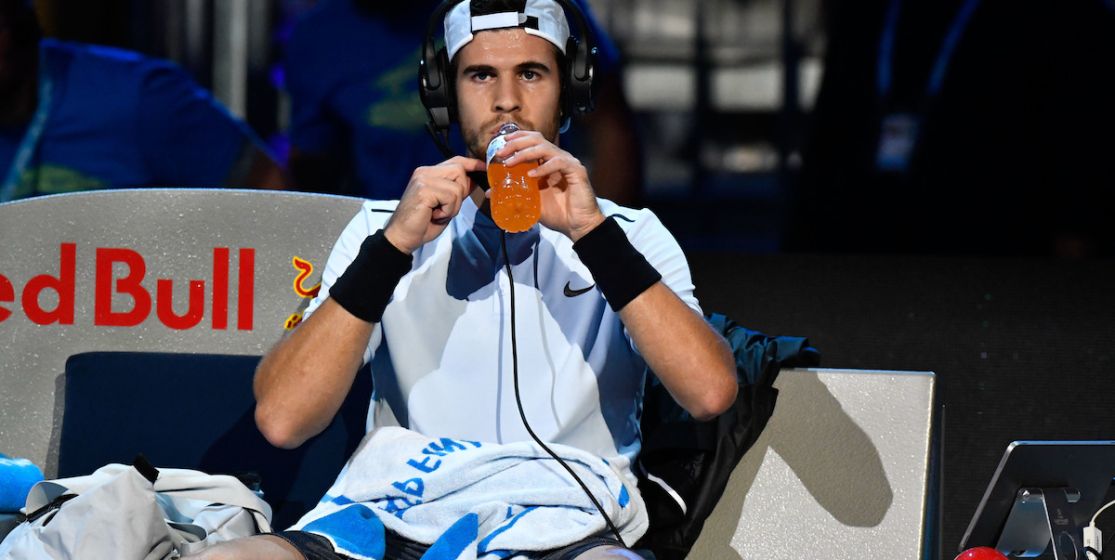On Monday 7 November 2017, at about 4.30 pm, after four tight sets and barely two hours, Daniil Medvedev beat fellow countryman Karen Khachanov. No biggie, right? Well, it was; by winning this all-Russian final, Medvedev made history. No need to watch the match, the score line speaks for itself – 2–4, 4–3(6), 4–3(3), 4–2. Did a computer bug turn 6 into 4? No, it was just the specificity of this Next Gen ATP Finals tournament hosted in the north-west of Milan – in a giant hall of the Fiera Milano exhibition centre – and in which both players featured.
Making tennis sexy again
The first Next Generation ATP Finals was a tournament featuring the best ranked under-21 ATP players and a guest – Gianluigi Quinzi, who qualified through a mini-tournament featuring the eight best ranked under-21 Italian players. It was made to experiment new rules and reach younger fans who were more into watching short highlight video clips online. The world tennis governing bodies worried about the post-Big Three era; legends Roger Federer, Rafael Nadal and Novak Djokovic were still flying high but were 98 years old overall. So, it was time to highlight the wonderkids and reinvent tennis. “Our mindset was like: ‘why not try new things and be more creative?’ We wanted to make tennis more exciting and get rid of as many slow moments as possible. We wanted to reach a new generation of fans while keeping our existing fanbase and lower the average age of tennis fans,” said head of tournament Ross Hutchins.
ATP boss Chris Kermode agreed: “All sports should adapt and make adjustments. Changing for the sake of changing is pointless; we are heading to the future and trying to think about the next generation of fans.” Hence the headline – ‘The future is now’ – of the tournament. Unlike traditional Masters tournaments, the competition does not award points for the ATP ranking. As part of these new rules, the fans were also allowed to change seat anytime they wanted during the final – not only when the players were switching sides. Now you understand why new – and sometimes crazy – rules were set during that week.
Fast, so fast… too fast?
Let’s talk about the points. The matches were played in a best-of-five sets format – as in Grand Slam tournaments – while the sets were played in seven games – best of four – with a 5-point tie-break at 3-3. There was no advantage at 40-40 either. Consequently, players were lost – Medvedev thought he had lost the third set at 3-1 against Jared Donaldson. If they lost focus, they were punished straightaway – conceding a break often was irreversible, so there were barely any turnarounds. Also, the matches were much shorter despite the many decisive games (25 out of 15 matches); only two matches lasted more than two hours and it was just a matter of minutes – 2 hours and six minutes for Chung Hyeon v Quinzi, two hours and one minute for Denis Shapovalov v Andrey Rublev. Finally, lets were also allowed on serves, which were not replayed; only one medical timeout was allowed; and a 25-second countdown was shown to players, who had to rush back to their position and stick to the time allowed to serve.
“This is a good rule; I cannot countdown myself, so it helps me figure out the time left. It goes fast, it is very demanding. Everything is psychologically different; you can’t relax. It is a constant challenge, I love it,” said Medvedev, before adding that such rules were more “stressful” and that losing your serve was like losing a set. “I think it is too short. We’d rather play a tie-break at 4-4; we’d have more breaking opportunities,” said Khachanov. As for Rublev, he was not convinced: “With these rules, anyone can beat anyone. It is unfair; the winner should be the hardest worker. You’re telling me that I should practice like crazy, only to play a 15-minute set? No way!” That being said, people in the stands didn’t see the problem because they never got bored.
The future is now
Between each robotic “Out!” or “Fault!” – it was a 2.0, even a 3.0 tournament as the Hawk-Eye technology had replaced the line judges for more efficient and legitimate decision making – the fans could, for instance, enjoy Borna Coric’s discussion with his coach, as coaching through microphone was allowed. Coric won on an ace though his ball touched the net, but it was a rule that the umpires struggled to keep in mind; for instance, Carlos Bernardes called a let twice in two days. Shapovalov said: “It is good to try new things. The no-let rule is entertaining. Sports need evolutions and changes.” Though Alexander Zverev preferred playing the ATP Finals for which he was qualified instead of this slightly crazy tournament won by Chung, he made it to Milan to play an exhibition opening match. It says a lot about how fun this competition is. “I don’t expect the trickiest rules, like the no-ad at 40-40, or the four-game sets, to be implemented right now, nor even in the next five years. But in the next ten years, perhaps,” said Chris Kermode. See you in 2027, then!
More information about
Players
Daniil Medvedev
Andrey Rublev
Denis Shapovalov
Karen Khachanov
Hyeon Chung












